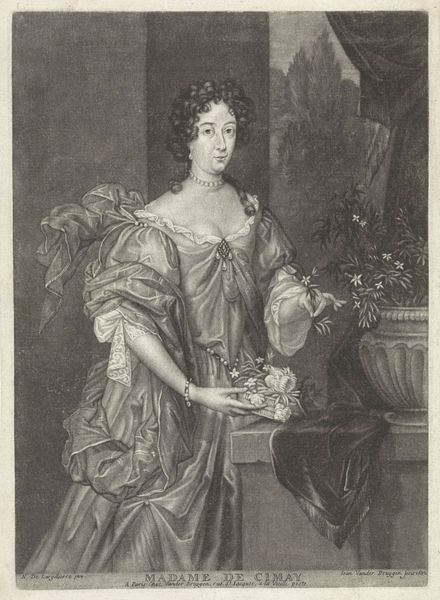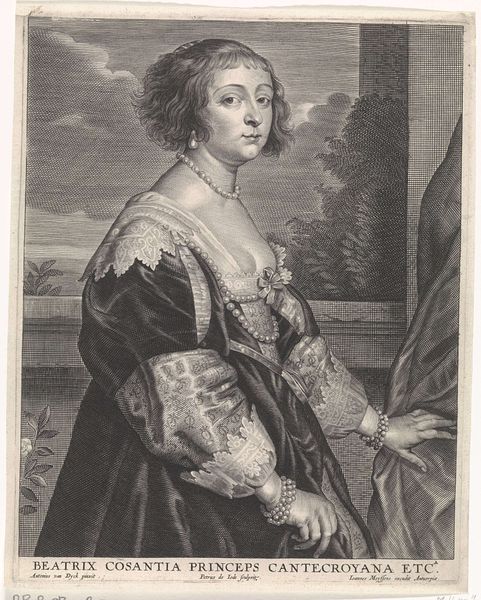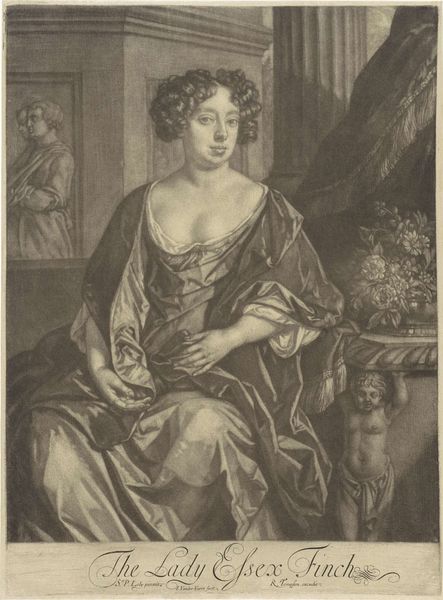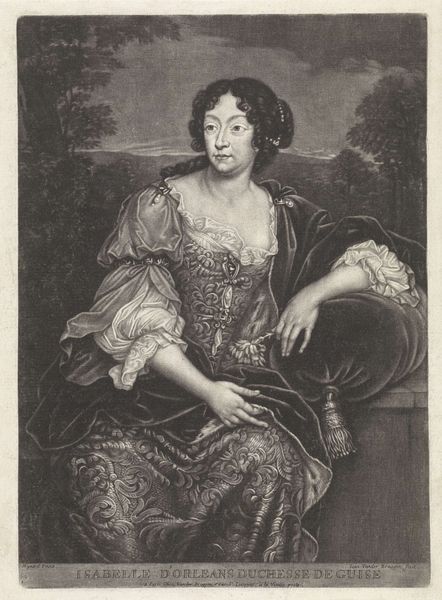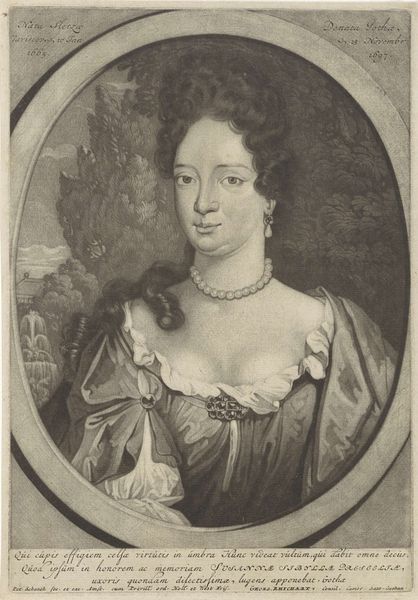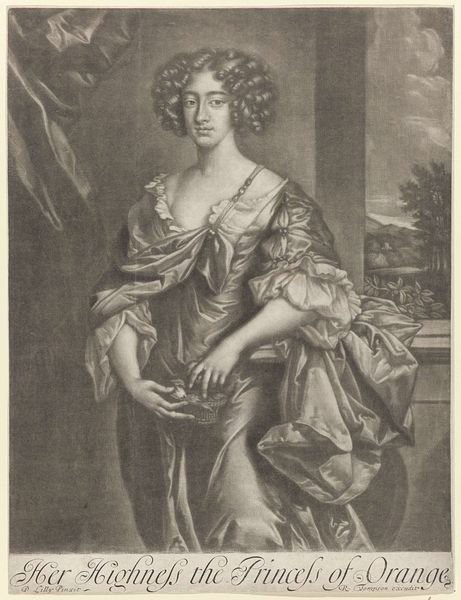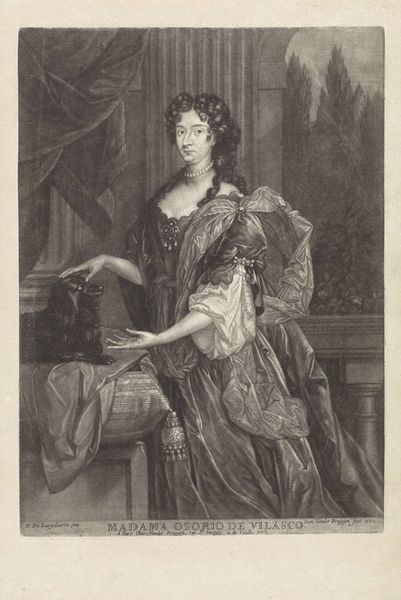
drawing, print, etching, engraving
#
portrait
#
drawing
#
baroque
# print
#
etching
#
old engraving style
#
figuration
#
line
#
italian-renaissance
#
engraving
Dimensions: height 254 mm, width 190 mm
Copyright: Rijks Museum: Open Domain
Editor: Here we have "Portret van Lucy Percy gravin van Carlisle," an etching and engraving by Pieter de Bailliu, sometime between 1623 and 1660. It's quite striking – the details are so fine. The lady has this incredibly self-assured gaze. What strikes you most about this portrait? Curator: Oh, her gaze indeed! It’s the kind that could launch a thousand ships or, at least, stir up some serious courtly intrigue. This wasn’t just a likeness; it was a carefully constructed performance. Do you notice how the texture of her satin gown contrasts with the stark architectural background? De Bailliu uses that to really amp up her presence, don't you think? Editor: I do. It feels almost staged, like she's a character in a play. What was the purpose of a portrait like this back then? Was it purely decorative? Curator: Decorative, perhaps, but also deeply political. Lucy Percy was a powerful figure in her own right; she knew exactly how to cultivate her image and this engraving likely served as a kind of proto-publicity. Do you get a sense that there is something enigmatic about her? Almost secretive? Editor: Definitely. There's something in her eyes that suggests she knows more than she's letting on. Curator: Exactly! And isn't it delicious? Knowing a little bit about her historical context, her involvement in plots and schemes, this image becomes even richer, more tantalizing. Editor: I never thought about prints as being tools of political maneuvering. It really shifts my perspective on art from this era. Curator: It's about power, perception, and performance – concepts that resonate even now! This little print gives us a tiny peephole into that world, doesn't it? It is as if it transcends its physical form to take on a kind of narrative and identity, which I think, personally, it is a beautiful example of. Editor: Absolutely! Now I want to delve more into 17th-century power dynamics. Thanks for shedding some light on it.
Comments
No comments
Be the first to comment and join the conversation on the ultimate creative platform.



